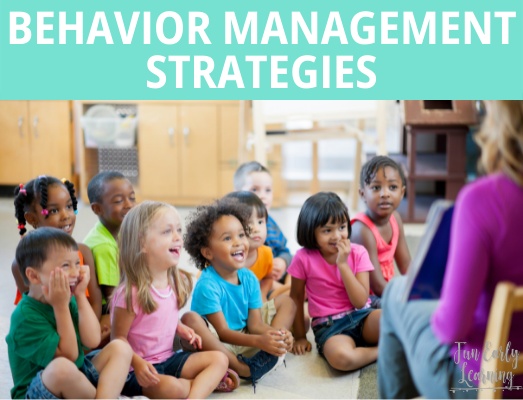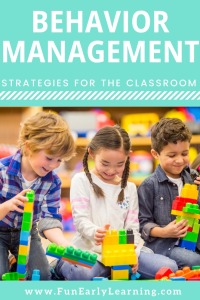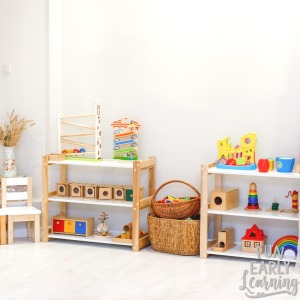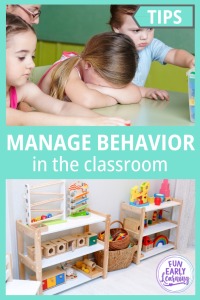
We all have had children in the classroom who push boundaries. They can’t manage their feelings, they struggle to follow directions, and they constantly demand attention. As tough as it is, these children are sending us a message that they need help in the only way they know how. It’s up to us to find out what they are trying to communicate and help to redirect them. By using these 5 behavior management strategies for the classroom, you can help your classroom and students thrive.

Behavior Management Strategies Teachers and Parents
Provide Clear and Simple Expectations
Our students don’t start class knowing what we expect from them. We need to teach them in clear and simple ways. This way, children know exactly what you expect. For example, instead of saying “Don’t tear the books,” say, “We read the books by carefully turning the pages.”
It can help to regularly discuss classroom expectations each day, like at circle time. Having posters around the room and at centers are also helpful. An example of a block center poster is: We take out the blocks, build with them, share, put them back.
Be Proactive and Plan Ahead
An organized classroom is so important. Planning ahead will help your day go so much smoother. Have the activities for the day ready and available. The book for story time picked out, centers set up, learning materials prepped, etc. This allows children to move from one activity to another while staying engaged. Disruptive behavior is lessened when you’re organized because activities keep flowing.

Patiently Redirect
It’s inevitable that throughout the day challenging behavior will creep up. Despite all your efforts and organization, kids are still learning. They’re still working on their social and emotional development and following the classroom expectations. We must be ready and able to patiently redirect them as needed.
When a challenging behavior starts, you can provide a gentle verbal reminder or a soft touch. This prevents challenging behaviors from escalating. For example, when a child starts to run around the room, give a gentle reminder that we walk inside so we don’t get hurt. Or if a child starts to jump around during circle time, pat the carpet to remind them to sit.
Develop a Relationship with Your Students
Teacher child relationships are so important. Take time to get to know each of your students. What do they like and dislike? What are their interests? This can help guide your daily lessons to keep your students engaged.
Having this strong teacher-child relationship is also important to children’s social and emotional development. This article talks about ways to build strong relationships with your students.
When you have great relationships with your students, you can anticipate their needs. You can identify triggers for behavioral problems and help to redirect before they escalate. For example, if Johnny starts to interrupt you during story time, that may be a trigger that he’s getting ready to throw a tantrum. By knowing Johnny’s trigger you can redirect him calmly and patiently. Remind him that when we talk during the story, we miss out on hearing it. Pat the rug to remind him to sit. It also gives you the opportunity to find out what is the root of the problem. You could talk to Johnny about what is going on with him at home or why he is feeling upset. That will help you know how to better help.

Understand Children’s Development
Children have different stages of development that they go throughout depending on their age. It’s important to understand how a child’s behavior may be related to their stage of development. That way, you can respond appropriately. For example, it may not be appropriate to expect a young child to sit through circle time or put toys away exactly where they go.


